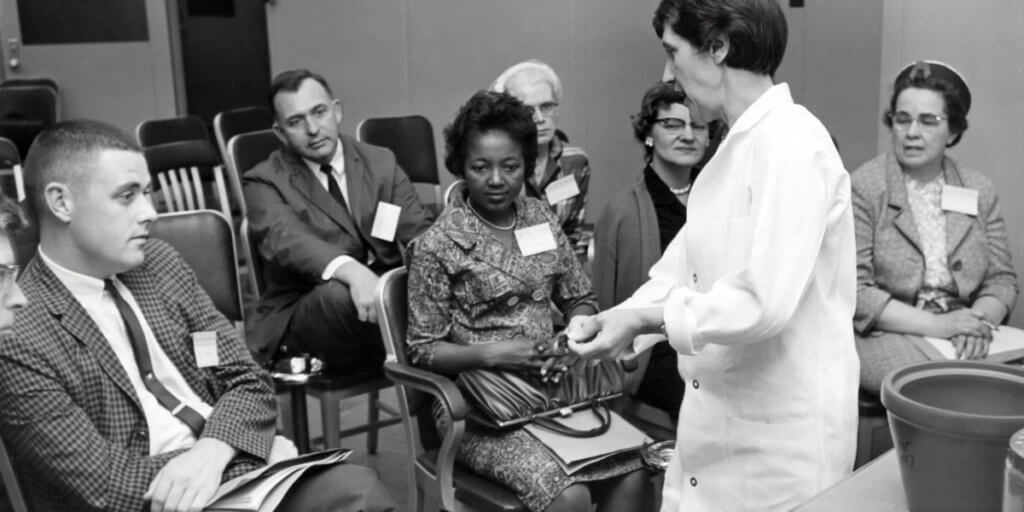2 . A Perspective on Business Metrics (I)
Four Key Questions for Outstanding Performance

SUMMARY
Inventing how your enterprise measures performance is an important act of leadership -more than a management control function. It is key to thriving in a marketplace that demands fresh value, innovation, and ever-better return on resources.
In turn, culture is a powerful force that determines the possibilities people recognize and the way they understand value -therefore, the actions they will take.
By Marsha Shenk
As organizations and economies grow in complexity, traditional practices for establishing strategic focus and accountability become increasingly strained. We argue that something more penetrating is called for.
What if executives are invited to take on new competencies to become more effective internal customers?
Questions vs Answers
Everyone seems to agree that a new way of thinking is demanded of successful business leaders in the 21st century, but there the agreement seems to end. Mechanistic, linear approaches to thinking, learning, and knowing are still proffered, though they cannot support the needs of enterprises facing shifting challenges –including rapid change, technological disruption, employee motivation, transparency and sustainability.
Unfortunately, much traditional business culture still celebrates “having the answers”. We all grew up in a system of education that graded us on our ability to do that.
However, in this still quasi-new business environment, paradox and uncertainty are more accurate reflections of the realities we face than are forecasts and models.
No amount of planning or goal setting can anticipate what will emerge in the next cycle. The practice of acknowledging that we really do not know begs for replacing strategic planning –as an annual process resulting in a “plan”– with strategic inquiry as an ongoing practice. Short cycle and iterative analysis that focus on learning and adjusting are replacing the now outdated idea that long-term strategy can provide foundation and direction to operations. That is, in fact, one of the foundations of Agile.
Anyone who claims to be right is, more likely than not, headed for a fall –or at best is limiting the ability of the organization to excel. In that sense, modern commerce rewards those who excel at asking questions.
This represents a profound cultural transformation, because it means that to effectively identify what “we do not know” is a sign of wisdom, not of ignorance: a step forward, not a step backward.
An adaptive modern business culture is based on inquiry. A business culture that can thrive in this fluid environment is likely to stand on a dynamic foundation of trust, transparency and risk-taking.
Asking questions is a way to focus peoples’ attention on creating the future. Collaborative inquiry has become a key leadership competence: allowing a group to explore and redefine shared concerns and outcomes.
Certainly, it is a very different way to operate and represents new skills for leaders.
Building an organization that lives in inquiry
Typically, and conventionally, executives have seen their role as declaring and promoting a vision of the future, with specific objectives, around which people in the organization can rally.
However, if you are looking to lead your industry and your enterprise, a transformative question will serve you better. What if, instead of a declaration –which presumes that the executive already knows the answer– you posed a big question?
For example, what if, instead of commissioning a strategic planning study to determine criteria for the next generation widget, you asked a question such as “Where might 300 million new customers come from over the next 5 years?” What if you could ask questions that were compelling enough to serve as a rallying point?

Although collaborative inquiry is not a new approach, mastering it is still a difficult task.
When Ruth Otte was CEO of the Discovery Channel, she grew revenues from $8 to $365 million.
Inheriting an organization in which creative, sales, and production people lived in different worlds and distrusted each other, she was determined to build a very different culture –one that would allow the company to invent and deliver more value for its customers.
Two factors became key to her success:
- Setting her sights on growing the best collaboration in the industry. She insisted that executives listen deeply to each other’s concerns. Becoming a fierce customer for that competence, she based a substantial portion of managers’ bonuses on measures from peers and subordinates regarding how well their points of view were understood and considered in decision-making.
- An evocative question was asked: What might our business measure internally to drive its success?
Four Questions that Catalyze Performance in Any Business
The standard measures of business success –revenues and shareholder value– are consequences of internal activity. Focusing on that internal activity, being able to measure its efficacy quickly –well before year-end results come in– is the job of an executive.
The process of creating such measures will enable you to identify and strengthen those aspects of your operation that truly provide advantage, offering enormous opportunity for propelling external success.
One common barrier is that the task of identifying performance measures is often conceived as a management control function, not an act of leadership. In the worst cases we have seen, responsibility for development of scorecards and other measurement tools is delegated to the Controller, often in response to auditors’ demands for greater transparency.
Despite the best intentions, these efforts are likely to be doomed to failure, because they will never be seen as an important part of the company’s competitive strategy.
We suggest, instead, that you form one or more thinking circles –made up of the most demanding people in your organization and perhaps a few external customers as well as other constituents– and begin exploring what would have them say the enterprise was doing great work.
You can further fuel such discussions by exposing employees to systematic qualitative customer research that asks a similar question. You will uncover new ways of viewing what might allow your enterprise to excel.
We invite you to begin with an overarching question:
- “How does our internal operation drive fulfillment of our brand promise?”
You can then open three other questions, which together provide a framework for dialog and development of proprietary success measures:
- “In what areas might we excel in order to delight key constituents?”
- “What key competencies and capabilities might be required to achieve this excellence?”
- “What culture might foster these advantages?”
These questions can be viewed as a new way to run meetings, or they can be used to generate a more powerful framework for observing your business.
The Focusing Question
⊗ How does your internal operation drive your ability to fulfill your brand promise?
Improving organizational performance is a constant pursuit. The best entry point begins with understanding and clarifying your brand promise. Brand promise distinguishes how your organization provides value, not just for customers, but for all your constituents.
The modern marketplace demands that you pay attention to not only customers and investors, but to your talented employees as well. And depending on your industry, government regulatory bodies, community groups, analysts, suppliers, and ancillary businesses will also play key roles in your efficacy.
As important as brand promise is, we believe it is rarely understood, despite much fashionable buzz about consumer power.
Your enterprise operates in a market –a market for capital, for customers, for suppliers, for employees. Your brand promise is a way of inviting those constituents to the benefit that you can provide.
Can you truly articulate a single brand promise that invites constituents to enjoy that benefit?
An executive acting as an effective customer for his or her people can treat brand promise, and the ability to fulfill it, as an ongoing inquiry: a powerful act of leadership and a rallying point for iterative growth, learning, and innovation. Moreover, you can generate a solid competitive advantage by insisting on the clearest, most compelling brand promise in your industry.
The Second Question
⊗ In what areas might you excel in order to delight key constituents?
High performance organizations know what they do well, and they constantly strive to do it better.
It is an old saw that no one succeeds by trying to be all things to all people, and truer than ever in a cacophonous marketplace. What matters most to your key constituents? What will most help them thrive? You might focus on rapid and innovative product development, excellent customer service, or ready availability of product at a low price. Our question remains: what internal focus will allow you to do that?

In the early ’90s in Knoxville, the leading optometric clinic wanted to conserve their lead, knowing the big discounters were coming. LensCrafters had already leased space in a new shopping mall.
They identified two key aspects of their brand promise that could differentiate them:
- Being part of the community (they knew your Granny…)
- Being sensitive to patients’ feelings (customer experience)
Then, they invented a new question: “How can we all be ‘Doctors’”?
This question inspired junior staff (some of whom had not completed high school) to improve their abilities to anticipate and address patients’ concerns, and also to ask themselves new questions such as “Who in the community needs eye care and can’t get it?”

They decided to track points in the clinic process where people felt uncomfortable or vulnerable, and to train junior staff to both anticipate and respond to questions. They went on to measure:
- New opportunities to provide information and comfort in the clinic.
- New opportunities to help families in the community (e.g. delivering glasses to the ill or elderly; providing free eye care to student athletes, etc.).
- How quickly they could respond.
By deepening customer relationships and uncovering new ways to serve a broader spectrum of people, the clinic not only defended his territory against discounters but also gained market share and profitability.
In the second part of this article, we will explore what we call hygiene factors, cover questions three and four, and present an example of how to develop measurements from the four key questions.
I am Marsha Shenk and these are my agile-thoughts
2021 © Vashon, Washington State, USA by Marsha Shenk

Marsha coined the term Business Anthropology in the 1990’s, claiming that commerce, society, and the brain co-evolved.
Her passion is helping people overcome the forces that make “work,” “career,” and “business” sources of stress, rather than enriching, collective experiences.
In 2019 she founded EcosystemiQ, which views businesses and communities as ecosystems that are comprised of interdependent, living networks that are constantly responding to change.
A popular speaker and a beloved teacher and coach, Marsha continues to illuminate how to cultivate collective wellbeing in commerce.
